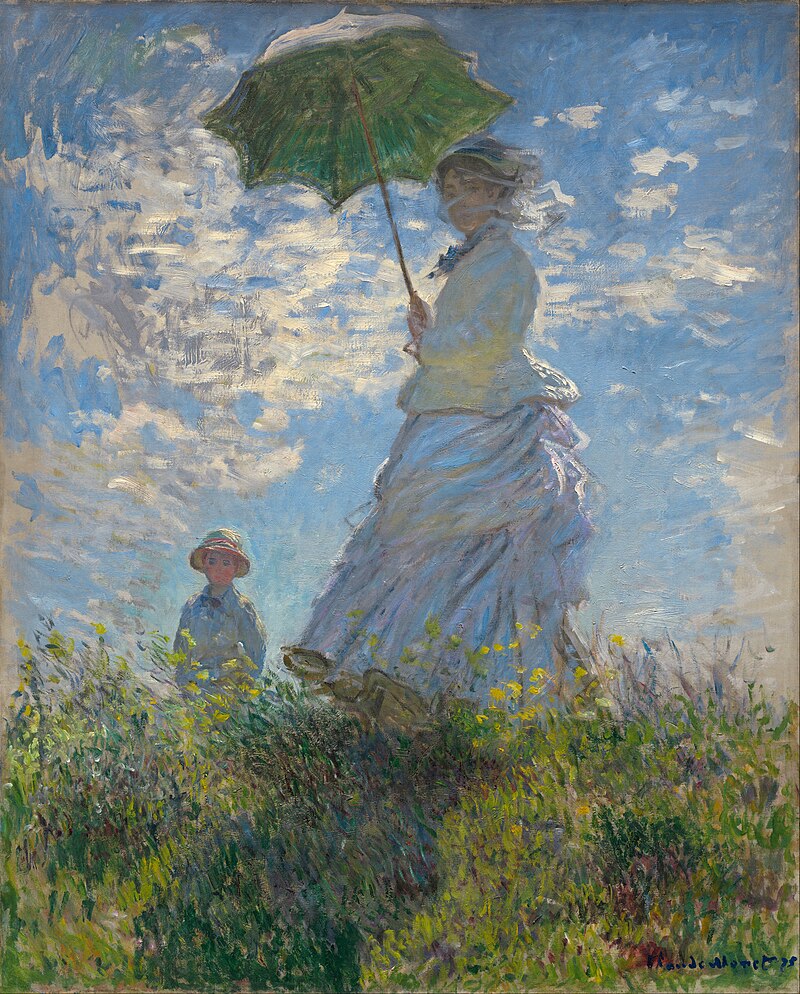woman with a parasol
Ok, so maybe I’m not a big art guy, per se, but I do enjoy the occasional stroll through the museum.
Last Saturday, I was out for a walk around the city. I’d just had a dirty chai at the local café while reading a paper, so I had some vague ideas about ion trapping in my mind as I made my way toward the Mall. It was raining intermittently, and I didn’t have an umbrella. Still, I was determined to make it to the National Gallery of Art, despite my shorts and T-shirt starting to soak through.
When I got there, I just wanted to wander. I kept picking directions arbitrarily, intentionally trying to avoid seeing everything. Sometimes it’s liberating to skip things—to accept the fact that you’re not going to experience all the moment has to offer. I loosened my focus and tried to notice only what pulled me in, stopping occasionally to take a closer look.
In a gallery of French Impressionists, I recognized Cassatt, Degas, and Monet. In one room, I stumbled upon one of my favorite paintings of all time: Woman with a Parasol by Claude Monet. It wasn’t even placed at the center of the room it commanded. A crowd gathered around it near the doorway, upsetting the balance of the space. I stood at the periphery, then moved in close when I could. I noticed for the first time—after reading the plaque—the parts of the canvas left exposed, and I learned that the work was created in a single outdoor session. I imagined the fervor in that moment, when something so beautiful was captured and frozen in time.
It was obvious to me as I looked at the painting that I found it moving, but I wasn’t sure exactly why. It’s technically very impressive, especially given the level of detail and the quickness with which it was executed. It has a warm and inviting color palette that brings me a certain comfort. The inscrutable expression on Camille Monet’s face and the placid look on Jean’s give the whole thing a surreal feeling, which I always enjoy. There’s a lot going on here, and the more I take it in, the more the story unwinds in my head.
After some reflection, I decided that it’s the brevity that captivates me the most. Camille’s flowing dress and veil show that she’s in the middle of a twisting motion, just beginning to glance back—right at the moment when this flash of beauty planted itself in Monet’s mind. The notion of beauty that exists only in an instant has always been appealing to me. To have a long look at something is to have time to analyze—to pick apart, codify, and rationalize. Of course, things can still have aesthetic appeal under the microscope, but there’s another level you can reach in those moments when you just feel that tingly sense of awe hit all at once. To me, this painting is Monet’s homage to one of those fleeting moments—there in the field, when his wife looked back at him—in a way that allows everyone who sees it to experience it, too.
I stood there in the gallery a little longer, taking it in. Finally satisfied, I wandered a bit further, letting the sublime feeling wane into a more casual admiration. I checked the time. I had to head out to meet a friend. I strolled back down to the first floor and exited through the gift shop, strongly considering an umbrella and a framed print of that very Monet I had just studied—though I left with neither. The rain let up just long enough for me to walk back to my place, my heart feeling just a bit lighter than it had before.
Enjoy Reading This Article?
Here are some more articles you might like to read next:
